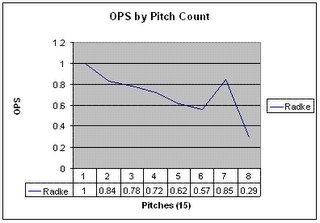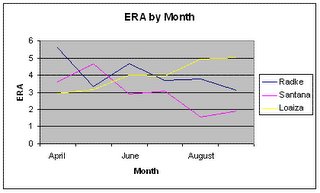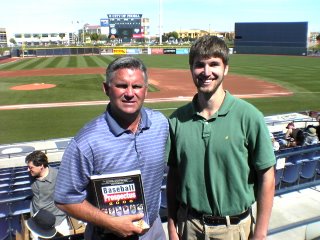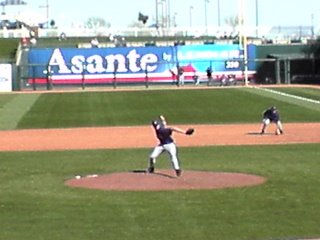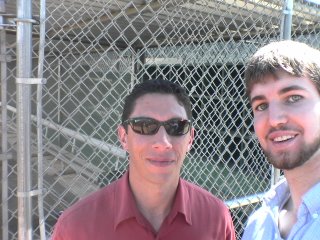National League Record Projections
Before falling face-first into the National League standings, it is worth noting that Nate Silver released his PECOTA standings today with a similarly conservative tone to my original rankings. There are a few deviations from my AL standings, and I feel like I should justify pegging Tampa for even 73 wins, which seems like irrational exuberance. My interest in the team comes from an innovative manager and a smart front office that should be able to make the little moves during the season that may counteract traditional wisdom but help in the short run (for example, a non-conventional bullpen usage pattern or mixing in young players more liberally than may seem appropriate). I think the re-incorporation of Baldelli, the possible arrival of Delmon Young and a potential rejuvenation of Edwin Jackson could be worth five wins over last year. Maybe they will not reach those “heights” this soon, but the team is on the rise.
NL East
Atlanta 90-72
New York 90-72
Philadelphia 83-79
Washington 73-89
Florida 60-102
NL Central
St. Louis 89-63
Houston 86-76
Milwaukee 84-78
Chicago 80-82
Cincinnati 78-84
Pittsburgh 76-86
NL West
Los Angeles 87-75
San Diego 82-80
San Francisco 80-82
Arizona 79-83
Colorado 70-92
Notes
-Washington, my adopted home team, is on its way down the toilet. A few weeks ago, I would have put them at about 80 wins. Hell, if they had just stopped making moves after the Castilla trade, I think they could go even higher. As it stands, 73 is the high end for their possibilities. The Soriano trade was a well-documented disaster on many, many levels. Brian Lawrence was seriously injured, meaning the Castilla trade can only help by paving the way for the Ryan Zimmerman. And now, he’s demoted Ryan Church, a solid contributor to the city formerly known as New Orleans so Brandon Watson (.268/.311/.314 PECOTA with sub-average defense) can fulfill Frank Robinson’s dreams of sugar-plum leadoff men. Now, as Nate Silver commented, I would not be surprised if the team tanked, people stopped showing up at RFK after the honeymoon wears off, and the loss total goes above 100.
-I’m just not picking against Atlanta. I just won’t. Maybe New York is a better pick, and maybe Philadelphia is even tough enough to give them a run, with Pat Gillick challenging Jon Schuerholz in the category of regular season GM moxie. I know that Cal Ripken eventually sat out and Joe Dimaggio eventually had an oh-fer. But you don’t go into game 57 picking him to whiff; it’s just not a good bargain. More directly, I think there is a real performative value in having Bobby Cox at the helm, and I expect big seasons from Chipper and Marucs Giles to go with continued breakouts from McCann and Francouer. And the Mets are not without flaws: second base is hardly resolved and their fragile pitching staff is thinner than it ought to be. Exiling Kris Benson and Jae Seo leaves them with a perplexing Pedro, an old Steve Trachsel, an older Tom Glavine, a frustrating Victor Zambrano and a rookie. Aaron Heilman, the only one of the group I think stands to actually exceed expectations, and he is the only glue that is supposed to hold it all together. If the team only has one injured pitcher at a time all year, they will be lucky, and the stronger bullpen is not enough to compensate.
-I thought Houston was going in the tank last year and I was dead wrong. Their situation isn’t much different this year, unless Clemens really stays on the sideline, but even without him I think replacing Bagwell gives enough of an offensive boost to an already decent team. Without Rocket, 86 wins is a bit high, but they could be in a much worse position.
-The West is another crapshoot. The question isn’t whether the Dodgers will stay healthy, it is who will be hurt when and for how long. I see J.D. Drew and Rafael Furcal being the guys who have to really stay healthy, Drew because he’s their best offensive player and Furcal because he is more difficult to replace and even modest injuries kill his value. Arizona could be worse, but as a whole, none of these teams seem like legitimate contenders even once one of them makes the playoffs.
And before I lose you, here are my playoff projections:
Divisional Round:
A’s defeat Red Sox
Yankees defeat Indians
Braves defeat Dodgers
Mets defeat Cardinals
League Championships:
A’s defeat Yankees
Braves defeat Mets
World Series:
A’s defeat Braves in five games.
